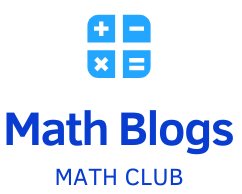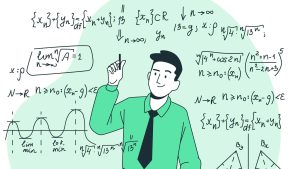Unaware students may struggle with foundational knowledge, abstract concepts or math anxiety – finding out exactly why can help your students overcome them with the proper support.
Emphasizing a growth mindset and providing ample practice opportunities are crucial in cultivating children’s self-confidence in their abilities. Tools and visual aids may give children extra practice to feel confident with their skillset.
Foundational Knowledge
Math struggles can often stem from an insufficient foundational knowledge base. This is especially evident among children with learning disabilities like dyscalculia who struggle to comprehend abstract concepts like fractions because they do not fully grasp basic arithmetic operations such as addition and multiplication.
These gaps in basic understanding can have a devastating impact on students’ ability to engage with advanced concepts and remain engaged, leading them down a path of discouragement and giving up altogether. Therefore, it’s essential that all students develop an in-depth knowledge of fundamentals before moving onto more challenging subjects.
Research shows that conceptual and procedural knowledge go hand-in-hand. While it’s tempting to pit these two kinds of knowledge against each other, this approach doesn’t help learners in any meaningful way. According to the National Research Council, procedural fluency and conceptual understanding are two strands of mathematical proficiency and therefore should not be seen as competing against each other.
What does this mean for students? First and foremost, it means that much of the time spent in math class helps students master fundamentals – from memorizing multiplication tables to practicing timed problem sets with feedback. Furthermore, introducing children early to mathematics (while reinforcing what they already know) can build confidence while developing essential skills necessary for long-term success.
Understanding Abstract Concepts
As students progress in school, math moves from concrete to abstract concepts. While this transition is essential to learning, it can also be tricky for many children who lack prior knowledge of advanced concepts like Pythagorean Theorem or multiplication facts. Without these foundational pieces in place, more difficult topics may prove challenging to comprehend and solve – be it fifth-graders who still don’t grasp multiplication facts, or ninth-grade students unable to grasp Pythagorean Theorem for instance – making progress difficult when faced with more complex problems later.
Root causes of students’ struggles can often be identified and addressed quickly. Educators can assist their pupils with understanding where they’re experiencing difficulty, as well as finding strategies that work.
Initial indications of difficulty typically surface during tests, when children cannot recall information they’ve learned. To address this challenge effectively, focus on strengthening math skills throughout the year instead of memorizing information for tests.
When kids struggle to understand abstract concepts, it can be helpful to break them down into smaller parts or provide visual aids that explain them. Manipulatives and graphs can make abstract ideas more tangible for kids. Furthermore, some children prefer learning by doing (tactile learning), while others benefit more from reading or listening (auditory). Deliberately selecting how best to teach abstract concepts will enable your student to form a firm grasp of said idea.
Mental Blocks
Many students who struggle with math may be experiencing a mental block. A mental block can act like a fog in one’s mind, obscuring even simple problems from view and making them appear too difficult. Stress, fatigue or simply trying to do too much in one day are often culprits behind such mental barriers.
Can also be caused by learning or attention problems. Children who struggle with numbers may have dyscalculia (also known as math dyslexia) while children with ADD/ADHD often rush through problems, skip steps or get them in the wrong order. Children who have trouble writing by hand (such as dysgraphia or dyspraxia) may make careless mistakes in their work.
Finally, some students suffer from what’s known as a fixed mindset – the belief that learning abilities are set from birth and cannot be altered – leading them to struggle with math anxiety and reduced motivation when trying to understand math concepts. This mindset can create math anxiety as well as low motivation to overcome barriers preventing understanding math concepts.
Mental blocks to math learning can be overcome with effective strategies. Helping children see that their struggles with mathematics are temporary and that they’re working hard to understand it is a great place to start, followed by encouraging practice sessions as practice will lead to improvement over time.
Problem-Solving Skills
Problem-solving skills are an essential element of math both in school and outside it, and students should develop strategies to overcome challenges effectively and creatively. For this skill to take hold, the student must identify a problem, outline an action plan to address it and implement an acceptable solution in an orderly fashion.
Many students struggle with math due to poor problem-solving abilities. While their calculation abilities may be adequate, they often lack the skills required for understanding problem contexts, making sound decisions, and organizing creative solutions to reach solutions (Sutarmi & Suarjana 2017). This often indicates an underlying misunderstanding of concepts within math which requires specific interventions to rectify.
Students lacking problem-solving abilities may also struggle to cope in high-pressure learning environments such as school tests. This may lead to anxiety and cognitive inhibition that hinder their ability to solve mathematical problems efficiently and effectively.
Teachers can support their students’ development of these skills by creating an engaging learning environment in the classroom. Teachers should strike a balance between independence and guided instruction by giving students time to work on problems independently before asking them about how they solved them, providing an opportunity for mutual learning between classmates. Furthermore, educators should provide hands-on tools or manipulatives as research suggests these activities may benefit kinesthetic learners as well.




